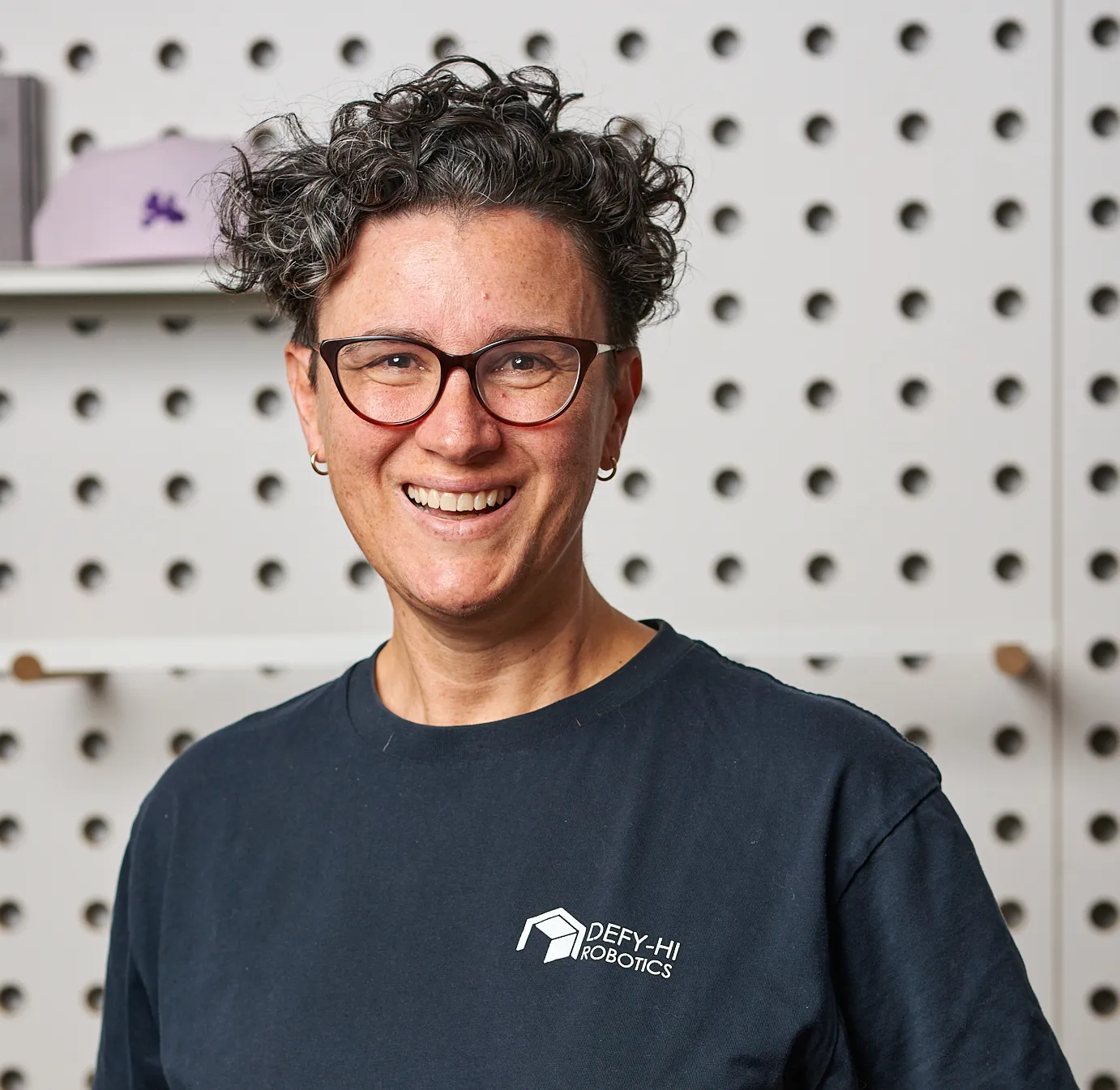Scared of heights?
A career as a rope access engineer will not be for you.
Those are the folks you see rappelling down high-rise buildings, checking the facade for safety and maintenance issues.
But for Defy-Hi Co-Founder Dr Abbie Widin, the best way to keep people safe at heights is to eliminate the risk entirely. This helps property owners meet their safety obligations.
Abbie and partner Melinda Johnson also own a rope access company. Over the years, they have heard stories that would shock you. Everything from people in the industry getting trapped on swing stages on the side of a building for hours, through to tragic accidents with loss of life.
“It just doesn’t make sense to have people doing that type of job,” Abbie tells me from her office at the CSIRO’s Lindfield Collaboration Hub.
“And it's a combination of a safety thing, but also just comprehensive data governance. The facade of a building deteriorates over time. Glass chips, concrete cracks and window seals fail. Things can actually fall off the building and fall 50m, 100m even 200m to the street below.
“You just can't have a situation where something as important as the facade is manually and only partially inspected, subject to human error.”
The blind spot Abbie refers to here is pretty staggering. In current facade condition inspections, only 20% of the facade is properly scanned due to cost considerations, and engineers waste a bunch of time inspecting non-problematic areas.
The lack of efficiency means it takes close to five years for building owners to have a complete view of their assets, and by then, a whole new set of issues may well have emerged.
“And the reality is humans get tired, and they have biases for certain defects,” Abbie adds.
“So, over time, they miss things. They make mistakes, they can't remember where they were when they saw that defect. So you’ve got these very expensive engineers dangling over the side of buildings, spending time on things that are not problems.”
Enter the BEAR (Building Envelope Access Robot)
Looking for a better way of doing things for their staff and clients, Abbie and Melinda began hunting for a robotics solution to import for their business in 2019.
The search took them as far as Finland, where they purchased the assets of a commercial window-cleaning robot. It wasn’t quite good enough, and so they took the next step, and brought on two junior engineers to develop a prototype.
One came from a connection at the CSIRO’s Connect@Lindfield program. The other, Abbie found on YouTube presenting the window cleaning robot he made for his award-winning HSC school project.
This promising team came up with the first iteration of the Inspector BEAR (Building Envelope Access Robot), a roof-mounted, portable robot that goes up and down the building scanning for potential defects.
Once earthside, AI-drives speed to insight. It scans thousands of images looking for potential defects. It then localises these defects on a map of the building. This helps portfolio building owners and builders find these defects easily in order to fix them promptly.
It’s a safer and smarter way to do facade inspection and the first robot from Defy-Hi, the startup that Abbie and Melinda officially spun out of their rope access business in 2021 with a grant from the NSW Government’s Physical Sciences Fund.
The funding helped the team build out their second prototype in 2022, and by June this year, the BEAR was in action on their first paid jobs with property giant CBRE. Yes Chef!
Defy-Hi are now one of 13 teams selected for the Startmate Winter 23 Accelerator, where Abbie and Melinda have spent the last 12 weeks zeroing in on their next big customer.
“So we've always been customer-focused here, like who's going to use this and how they're going to do it. But Startmate really challenged our assumptions about who was going to spend the money on it,” Abbie says.
In their sights are now three distinct segments: large institutional property owners who want to protect long-held assets (think buildings worth hundreds of millions of dollars), commercial builders working on new developments and professional facilities managers like CBRE and JLL who manage most of the city skyline.
The BEAR is attractive as a solution in cities where it is difficult to use drones for legal or operational reasons. Because it doesn’t classify as an aircraft like a drone does, the robot can operate in the CBD and near airports without approval from the Civil Aviation Authority - great news for the type of customer they’re going after.
Safeguarding our skyline
Abbie says the time feels right for AI-driven tools like Defy-Hi to enter the market, as long-held assets only get older and new developments only get taller and potentially more death-defying to inspect. “We have been astonished at how much customer interest there is. There isn’t a single property owner or facility manager that is happy with how the building envelope is accessed today.”
It’s an industry that wants to change, and Defy-Hi will be at the forefront.
Catch Abbie and the BEAR in action at Startmate Demo Day October 19, run this year as part of SXSW Sydney. Grab your ticket here.






.png)

